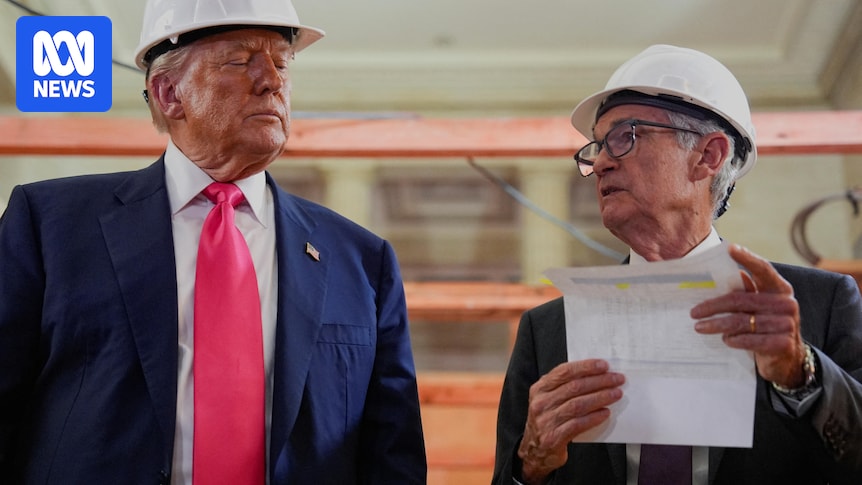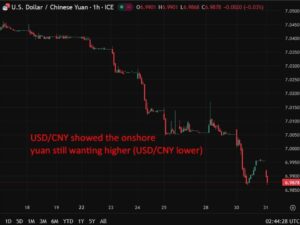
In a dramatic confrontation that unfolded in front of TV cameras, President Donald Trump and Federal Reserve Chair Jerome Powell clashed over the escalating costs of a long-planned renovation project at the central bank. The exchange took place amid a backdrop of construction, with both figures donning hard hats and addressing the nation from the site.
President Trump criticized the Federal Reserve for what he claimed to be an exorbitant price tag of $3.1 billion for the renovations, a figure he argued was significantly higher than the Fed’s reported cost of $2.5 billion. Powell, standing beside Trump, immediately countered the president’s claim, clarifying that Trump’s figures included costs from a separate project completed five years earlier.
Trump’s Pressure on Interest Rates
The confrontation marks a new chapter in Trump’s ongoing campaign to pressure Powell into lowering interest rates, which the president believes would spur economic growth and reduce government interest payments. Trump has repeatedly expressed his desire for lower borrowing costs, stating, “We have to get the interest rates down. People are pretty much unable to buy houses.”
However, Powell and other Federal Reserve officials have signaled their intention to keep the key interest rate steady at around 4.3 percent, with potential rate cuts not anticipated until September. The Fed’s decisions are guided by its dual mandate to maximize employment and stabilize prices, often requiring politically unpopular moves.
Can Trump Fire Powell?
Trump’s criticism of Powell extends beyond interest rates to the management of the Fed’s renovation project. The president has suggested that Powell’s handling of the renovation could constitute grounds for dismissal, although the Supreme Court has indicated that Powell cannot be removed simply due to policy disagreements.
Legally, Trump could attempt to remove Powell “for cause,” such as misconduct. However, such a move would be unprecedented and could undermine the Fed’s independence, potentially leading to market instability.
Historical Context and Implications
The Federal Reserve’s independence from political influence has been a cornerstone of its ability to manage the economy effectively. Historically, attempts to politicize the Fed have led to economic volatility. The Fed’s mandate allows it to operate based on economic needs rather than political agendas, a principle that has been respected by previous administrations.
Removing Powell could set a dangerous precedent, potentially leading to increased inflation and interest rates, and weakening the economy. The Fed’s independence is crucial for maintaining investor confidence and ensuring economic stability.
The Renovation Project: A Closer Look
The renovation of the Marriner S Eccles Building, the Fed’s headquarters, is deemed necessary due to outdated infrastructure, including electrical, plumbing, and air conditioning systems dating back to the 1930s. The project aims to modernize the building and remove hazardous materials like asbestos and lead.
While the renovation’s cost has increased to $2.5 billion, Federal Reserve officials argue that the upgrades will ultimately reduce expenses by consolidating operations and reducing the need for additional office space. The project has faced criticism from the Trump administration, which has labeled it an “ostentatious overhaul.”
Russ Vought, the administration’s top budget adviser, expressed that Trump was “extremely troubled” by the project’s expense.
White House’s Next Move
The White House has suggested that the Fed’s changes to the renovation plans may have violated the terms of approval from the National Capital Planning Commission. The administration argues that the Fed should seek additional approval due to these changes.
James Blair, the White House deputy chief of staff, has indicated plans to review the Fed’s materials and circulate a letter requesting further scrutiny of the project’s alignment with the 2021 approval.
This ongoing saga between Trump and Powell not only highlights the tensions between the executive branch and the Federal Reserve but also raises questions about the future of the Fed’s independence and the potential economic implications of political interference.
As the situation develops, markets remain on edge, bracing for potential repercussions from this high-stakes political drama.







